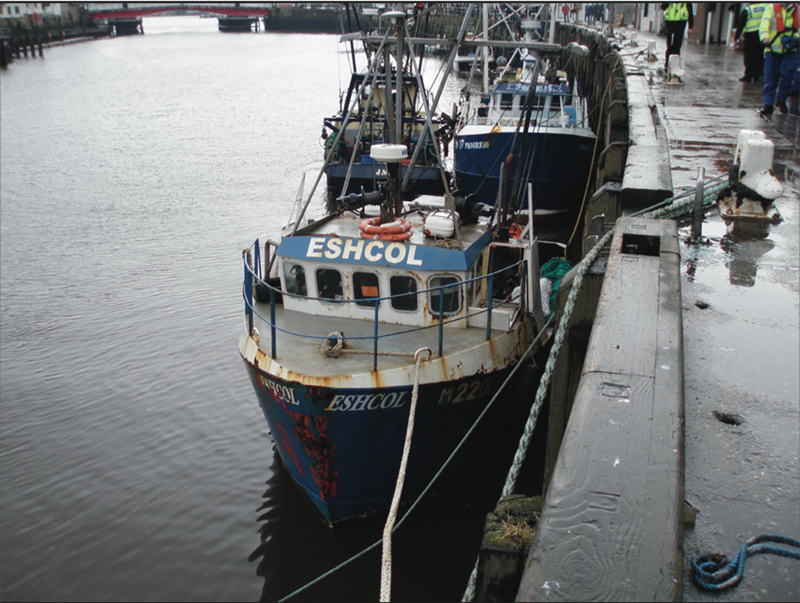A quick brew turned into a frightening fire aboard a classic wooden boat for PBO contributor Max Liberson, who vows not to use a portable gas stove on board again.
Until mid-March, Max regularly used his portable gas stove, bought for £9.99, to make a cup of tea, “rather than going through the rigmarole of firing up the Taylor’s”.
But since his bargain stove sparked a blaze aboard his 1930s gaff cutter Wendy May, Max warns boaters not to risk using a camping stove in a confined space:
“I know they are common on smaller boats because they are convenient.
“I turned mine on to make a brew and it started to burn right next to the cylinder.
“It’s now in the skip and I am looking for something to replace it with.”
Many makes and model of this type of inexpensive camping gas stove are available, all broadly similar.

Heed the gas stove warnings
The packaging of Max’s stove clearly states that it should not be used in enclosed spaces – and the warning is repeated on a panel on the cooker itself – but Max is concerned that his scenario is not uncommon.
He wishes to raise awareness about how easily fires can start, if a gas camping stove canister leaks or is incorrectly fitted.
Max, who featured in PBO’s August 2020 issue about becoming a classic boat owner, added: “Since sharing my story on Facebook I have had three friends tell me about their truly horrific experiences with portable gas cookers.”
Max’s friend Alison Hargreaves said: “Same thing happened to me last year, our cooker was broken so I ignited the camping stove.
“There was a pop and the whole thing burst into flames. It’s alarming how quickly the fire grows.”

Boaters are being urged to heed portable gas cooker warnings
Brian Ewald said: “The same thing happened to me in my outside kitchen at home. The flames reached 2ft high.”
Toni Hodgkins said: “I had one in my schooner as a back up to my double Origo.
“We ran out of cook fuel on the way to a port, so I said ‘No problem we will use the little gas one’, plugged the canister in, filled up the kettle, put it on the stove.
“I clicked on the switch and ‘boof’ it went up. It now lives in the sea off Essex, between Harwich and Brightlingsea. No gas anywhere on board now.”
Article continues below…
Becoming an Old Gaffer – How I found my ideal boat
I don’t own Wendy May, she owns me. I’m just the custodian. She was built for an army officer in…
Carbon monoxide warning to boat owners following double tragedy
Two young men died when they left a gas cooker grill on to heat their boat
Homeward bound: A solo voyage from Portugal to Plymouth
Max Liberson tests his seamanship and comes to terms with grief on a single-handed voyage from Portugal to Plymouth, aboard…

Don’t do this! Max’s stove was used in a compact space close to possible combustibles
Expert advice on gas stove use
A spokesman for the Boat Safety Scheme said: “Portable gas appliances are designed for the open air.
“They should be used in outside space and fuel canisters must be exchanged well away from sources of ignition and definitely not aboard.
“Escaped LPG from only one can form a flammable gas cloud the size of 250 cans which can cause an explosion big enough to send people to hospital.
“In the relatively poorly ventilated, tight confines of a boat escaping gas is more dangerous when it is contained, meaning that static, other electrical sources or even a mechanical spark can ignite an explosion that will be focused and reflected within the space of the boat structure.
“When not in operation, any appliance with a canister fitted and all spare gas canisters, empty or full, must be stowed in lockers that are self-draining, or on open deck areas where any leaking gas will flow overboard.”
Why not subscribe today?
For more articles like this, including DIY, money-saving advice, great boat projects, expert tips and ways to improve your boat’s performance, take out a magazine subscription to Britain’s best-selling boating magazine.
Subscribe, or make a gift for someone else, and you’ll always save at least 30% compared to newsstand prices.
See the latest PBO subscription deals on magazinesdirect.com







